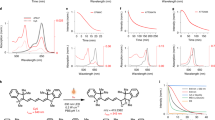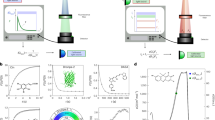Abstract
THAT fluorescence may result when a glazier's diamond is drawn over the surface of a pane of glass was shown by Foley many years ago (Science, N.S., vol. 13, No. 332, May 10, 1901). This phenomenon may be studied indirectly in two ways: (a) by ruling with a diamond on the back of a photographic plate, (b) by placing a clear glass plate on the film side and ruling on that. In either case on development a distinct darkened band will appear (if there was fluorescence) the width of which depends on the thickness of the glass plate that was ruled and the angle of total reflection. In (a) the affected portion of the film is of course on the under side next to the glass, and the development consequently is considerably slower than in (b), where the exposure is on the front side of the film. The angle of total reflection in either case is given by the relation
This is a preview of subscription content, access via your institution
Access options
Subscribe to this journal
Receive 51 print issues and online access
$199.00 per year
only $3.90 per issue
Buy this article
- Purchase on Springer Link
- Instant access to full article PDF
Prices may be subject to local taxes which are calculated during checkout
Similar content being viewed by others
Author information
Authors and Affiliations
Rights and permissions
About this article
Cite this article
KNIPP, C. Diamond-glass Fluorescence. Nature 120, 262–263 (1927). https://doi.org/10.1038/120262a0
Issue Date:
DOI: https://doi.org/10.1038/120262a0
Comments
By submitting a comment you agree to abide by our Terms and Community Guidelines. If you find something abusive or that does not comply with our terms or guidelines please flag it as inappropriate.



